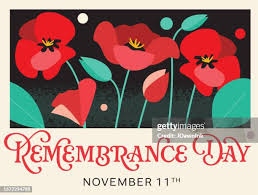Understanding the Significance of Remembrance Day in Canada

Introduction
Remembrance Day, observed on November 11 each year, stands as a poignant reminder of the sacrifices made by Canadian servicemen and women in conflicts throughout history. This day is not only a moment to honor those who have served but also a crucial opportunity for reflection on the costs of war and the importance of peace. With its roots dating back to the end of World War I, the commemoration of Remembrance Day remains highly relevant in today’s society as Canada continues to participate in global peacekeeping and military missions.
Historical Context
The first official observance of Remembrance Day occurred in 1919, one year after the end of the First World War, initially called Armistice Day. It was established to honor the soldiers who had lost their lives in battle. In 1931, the day was officially renamed Remembrance Day and became a federal statutory holiday in Canada. The observance typically includes ceremonies held at war memorials, cenotaphs, and military cemeteries across the country.
Recent Observances
This year, as Canada marks the 105th anniversary of Remembrance Day, ceremonies have been heavily focused on themes of remembrance amid the backdrop of current global conflicts. Services were held in major cities including Ottawa, Toronto, and Vancouver, where veterans, dignitaries, and citizens gathered to pay their respects. In Ottawa, the National War Memorial was the focal point of the national ceremony, which included a moment of silence at 11:00 AM, the exact time the Armistice took effect in 1918.
The Royal Canadian Legion has played a significant role in promoting and organizing these events, emphasizing the importance of remembering not just those who died but also those who served returning home. This year, the added focus on mental health support for veterans has been highlighted, acknowledging the ongoing challenges they face even after returning from service.
Future Implications
Looking ahead, Remembrance Day continues to evolve, particularly in how younger generations engage with its significance. Educational programs and initiatives are being developed to ensure that children and young adults learn about the sacrifices made, fostering a culture of remembrance for years to come. The growing presence of social media also allows for a wider reach, enabling individuals to share their stories and experiences related to service.
Conclusion
In conclusion, Remembrance Day serves as a critical reminder of the importance of peace and the sacrifices made for it. As Canada honors its veterans, it remains essential for citizens to embrace the day’s significance, reflecting both on historical impacts and current challenges. As we move forward, the observance of Remembrance Day will continue to be a vital part of Canada’s national identity and collective memory.









